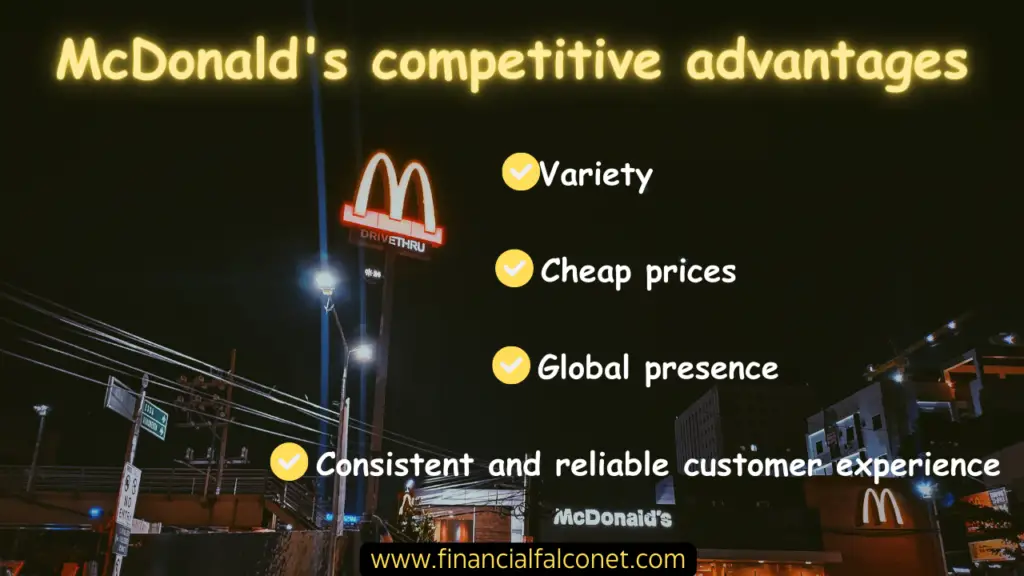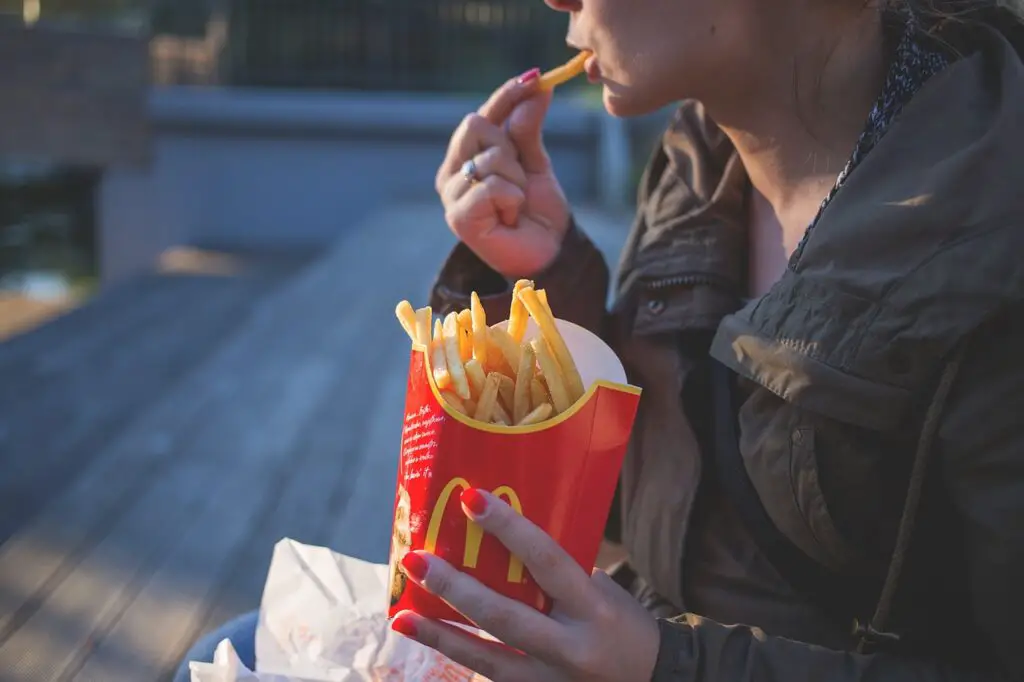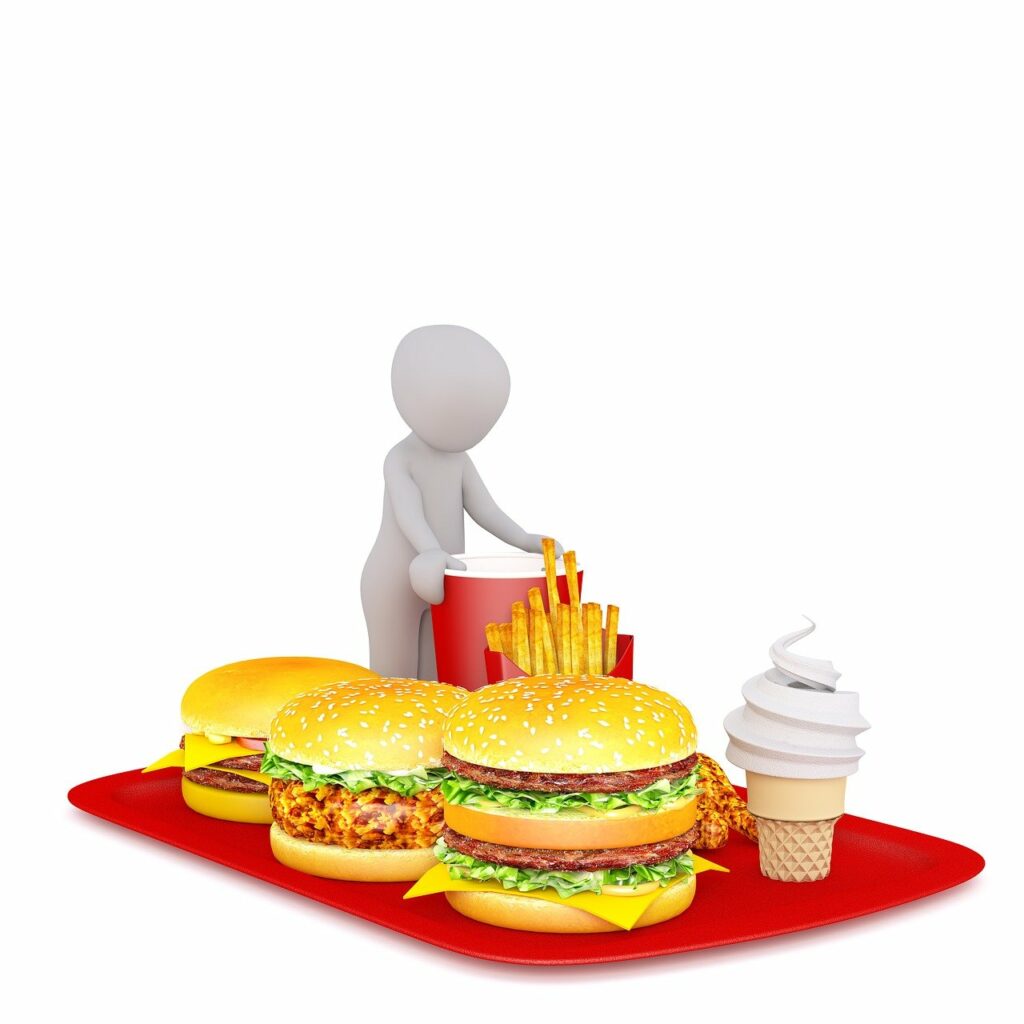McDonald’s competitive advantages have aided the brand in maintaining its position as one of the biggest fast-food chains in the world. The company has been in existence for over 70 years and has been named among the top 10 most valuable brands in the world from 2008 until 2022 based on a business valuation by the Kantar Group.
For any business to thrive and stand out in the business space, it must have some distinctive features that not only differentiate it from similar businesses but, that make it outrightly unique. This is generally referred to as a company’s competitive advantage. McDonald’s competitive advantages include the low price of its products and its global presence across the globe.
See also: Comparative advantage examples and theory
Who are McDonald’s competitors?
McDonald’s competitors include Burger King, Kentucky Fried Chicken (KFC), Wendy’s, Subway, Domino’s Pizza, Chipotle Mexican Grill Inc., Dunkin Donuts, Taco Bell, and Starbucks.
Its competitors are businesses in the restaurant and fast-food industry especially those that operate within the same locality. Other McDonald’s competitors are Popeyes, Pizza Hut, Tim Hortons, Costa Coffee, and Papa John’s Pizza.
Also, Panera Bread Compan, Jack in the Box, Arby’s, Pret a Manger, Sbarro, Hungry Jack’s, and Nordsee are additional companies that are McDonald’s competitors.

See also: Benefits and Advantages of the Digital Revolution
Mcdonald’s competitive strategy
The concept of competitive strategy was discussed by Michael E. Porter in his 1980 book, Competitive Strategy. This concept is applicable to Mcdonald’s as well. Porter discussed the 3 generic competitive strategies which include:
- Overall cost leadership
- Differentiation
- Focus
Overall cost leadership
This requires efficient business management practices that are geared toward cost reduction. It includes the creation or purchase of efficient-scale machines, tools, or equipment, avoidance of marginal customer accounts, tight control of overhead cost, and minimization of expenses in other business aspects such as research and development, marketing and advertising, services, salaries, etc.
When cost is reduced in the aforementioned area, then the company can offer its products or services at a cheaper cost relative to its competitors. Although the lower pricing of goods and services often means the profit per unit of product or service is minimal, the company will still be able to maintain profitability by selling in larger quantities.
This is made possible especially when the company is able to offer a product or service of good quality when compared to its competitors. Being able to source raw materials at a cheaper rate is also a major contributor to using overall cost leadership as a competitive strategy.
The overall cost leadership is the major competitive strategy used by McDonald’s. Right from the company’s inception in 1948, its founders, Maurice and Ronald McDonald have always focused on keeping the cost of their products low while maintaining quality and standards. We shall discuss more on how McDonald’s competitive advantage rests around overall cost leadership hereafter.
Differentiation
Differentiation is the second generic competitive strategy that may be employed by a business corporation. It involves offering a product or service that is perceived as unique within the industry where the business operates. Differentiation of a product or service can take different forms depending on how it is implemented.
When differentiation is used as a competitive strategy, it often guarantees above-average returns for the company because it gives a sense of exclusivity for the product or service.
Differentiation also insulates a company from competitive rivalry due to customers’ loyalty to the brand and the resulting lower sensitivity to price by customers. The combination of customer loyalty and the need for a competitor to overcome the unique product offering of the company provides entry barriers to competitors. Hence, differentiation effectively serves as a competitive advantage.
In the case of McDonald’s, they have utilized the differentiation competitive strategy by providing customers with distinctively tasty meals and unique products through their regional, seasonal, and time-based offers.
Focus
Focus is another competitive strategy used by companies to gain a competitive advantage. It involves focusing on a geographic market, a segment of the product line (specialization), or the sale of your product or service to a particular market segment mostly through demographic marketing.
Using focus as a competitive strategy entails streamlining a company’s operation to tackle a defined portion of the market. This rests on the premise that a company is better able to serve its narrow strategic target more effectively or efficiently than competitors who are competing more broadly. Through focusing, a company achieves either differentiation from better meeting the needs of the particular target, lower costs in serving this target, or both.
McDonald’s selectively uses this competitive strategy by tweaking its product offerings to align with the specific location where they operate such as providing vegetarian products or halal meals in countries or locations where such products are preferred.
See also: Companies with Vertical Integration Strategies
How does Mcdonald’s strategy give them a competitive advantage against their competitors?
McDonald’s competitive strategy of overall cost leadership gives them the competitive advantage of having more customers due to the combination of high food quality and cheap pricing. This gives them a competitive advantage against their competitors because the competitors are unable to match this cheap pricing alongside high quality.
The expanded customer base through its numerous restaurants scattered all over the world further gives McDonald’s more competitive advantage against its competitors due to its huge market share.
See also: Vertical Integration Benefits
McDonald’s competitive advantages
- Consistent and reliable customer experience
- Cheap prices
- Global presence
- Variety
Consistent and reliable customer experience
Consistent and reliable customer experience is one of McDonald’s competitive advantages. It has carved a niche for itself by substantially offering a fairly uniform menu through standardization of ingredients and preparation methods.
Part of the menu in most McDonald’s restaurants includes hamburgers, fries, cheeseburgers, Chicken McNuggets, etc.

Asides the menu standardization McDonald’s has developed a highly structured and standardized system of operation. This ensures that all of its restaurants operate in largely the same way irrespective of geographical differences. This ensures that the waiting time after ordering a meal is shortened.
The consistency of the menu and service to consumers has helped to build a strong brand and customer loyalty. This serves as one of McDonald’s competitive advantages as customers know exactly what to expect when they visit any McDonald’s outlet.
Consistent and reliable customer experience as McDonald’s competitive advantage is closely related to the focused competitive strategy.
Cheap prices
The sale of the company’s products at competitively cheap prices is the key competitive advantage of McDonald’s. The low pricing can be attributed to the company being actively involved in its supply chain process through the vertical integration of some of its operations.
McDonald’s currently exists in over 100 countries with over 38,000 outlets. This largeness of the business means that it has ongoing supplier relationships with a wide network of suppliers that provide food ingredients, packaging, equipment, and other goods.
In addition to having access to various food ingredients and other items at comparatively lesser costs due to the large volume of purchases, McDonald’s has also proven over its decades of operations that it is also concerned with the taste, nutrition, and quality of the products on its menu.
The brand provides nutritional information on the food it serves on its website. It also has a Food Safety Advisory Council, comprised of the Company’s internal food safety experts, its ingredients suppliers, and outside academics. These provide the company with the necessary insight into food safety and quality.
McDonald’s establishes and enforces high food safety and quality standards by maintaining food studios and quality centers around the world which are equipped to promote the consistency of high food quality and standards. This involves third-party verifications, ongoing product reviews, and virtual supplier visits.
The company has ongoing programs to educate and equip its employees about food safety practices such as proper storage, handling, and preparation of food. It also organizes training on best practices for food safety and quality for its suppliers and restaurant operators.
McDonald’s competitive advantage of cheap pricing is an offspring of the overall cost leadership strategy it uses. This makes it possible to get a meal from the brand’s outlets for as low as $1.
The cheap pricing further aids the company’s profitability because a larger population can comfortably patronize the brand thereby facilitating McDonald’s attainment of market leadership.
For instance, during the 2007/2008 global economic downturn, the company recorded increased patronage and an increase in revenue while other fast-food chains were barely struggling to survive. McDonald’s revenue increased from $20.895 million in 2006 to $22.787 million and $23.522 million in 2007 and 2008 respectively.
Hence, McDonald’s competitive advantage of cheap pricing sets it apart from other fast-food chains.
See also: Starbucks Supply Chain Issues and Management
Global presence
Another competitive advantage of Mcdonald’s is its global presence. The company uses market penetration to expand its presence and customer base; these by extension also expands its ability to generate more revenue through increased sales. Currently, the company operates over 100 outlets worldwide.
McDonald’s has achieved a global presence through a combination of different approaches including partnerships with local restaurants, franchising, licensing, and joint ventures.
The overall cost leadership competitive strategy is also of importance here. This is because as the company expands to new locations, it still maintains its model of reducing production costs and cheap pricing of its food. This is one of the foremost types of pricing strategies that aid market penetration. It is also a marketing pricing strategy that attracts new customers.
Another way McDonald’s competitive advantage gives it an edge and aids in its global presence is through the distribution agreements it has with retail giants such as Walmart. The agreement between the fast-food chain and the multinational retailer means customers can access McDonald’s products through Walmart retail stores.
McDonald’s global presence further strengthens its brand and enhances its reputation as a market leader in the fast-food business. These are significant drivers of its competitive advantage in the industry making it widely recognized as one of the most iconic and successful fast-food chains in the world.
Variety
The availability of a variety of offerings gives McDonald’s a competitive edge in the fast-food business. This variety is available both in the kinds of restaurants as well as the meals offered.
McDonald’s has several kinds of restaurants including sit-ins, drive-thrus, and self-service kiosks. This variation in restaurant types ensures that the company caters to a wide variety of consumers.
They even went further by offering food delivery options that customers who would rather have their meals delivered to their preferred location can use.

McDonald’s gains an additional competitive advantage by tweaking its menu to suit the geographical distinction and preferences of its customer base. For instance, the brand does not serve any beef in its Indian outlets and does not serve pork in the middle east.
It has further introduced several vegan offerings such as the McPlant burger, Vegetable Deluxe, Veggie Dippers, and Millionaire’s Donut to cater to its increasing vegetarian consumers.
This availability of variation gives McDonald’s a competitive advantage over fast-food chains that only serve a standardized menu without making room for variations.
See also: Disadvantages of Vertical Integration
What are McDonald’s competitive advantages?
McDonald’s competitive advantages include consistent and reliable customer experience, cheap food prices, global presence, and the availability of a variety of meals and service channels.
See also: Disadvantages of Societal Marketing Concept
What makes McDonald’s different from its competitors?
McDonald’s is different from its competitors because it maintains high quality standards, good taste, and a variety of meals. It additionally gives customers good value for their money through its cheap pricing. All these combine to give McDonald’s a competitive advantage in the fast-food industry.
See also: 6 Benefits of mobile marketing
Conclusion
McDonald’s competitive advantage is centered around the overall cost leadership competitive strategy. The company has built a strong reputation as a brand that offers consistent services, and high-quality meals at affordable rates. This has aided the company in attracting and maintaining a loyal customer base all over the world despite the increasing competition in the fast-food business.
Another factor that gives McDonald’s a competitive advantage over its competitors is its evolution to keep up with consumer demands. This evolution can be seen in its provision of varying meals based on geographical preferences. It has also as utilized technology to make ordering meals easier by using digital menu boards as well as online orders through the McDelivery app.
Related:
- IKEA Supply Chain Problems and Issues
- Tesla Competitive Advantage and Strategy
- Netflix’s Vertical Integration Strategy and Examples
- Telstra’s Vertical Integration Strategy and Examples
Blessing's experience lies in business, finance, literature, and marketing. She enjoys writing or editing in these fields, reflecting her experiences and expertise in all the content that she writes.

